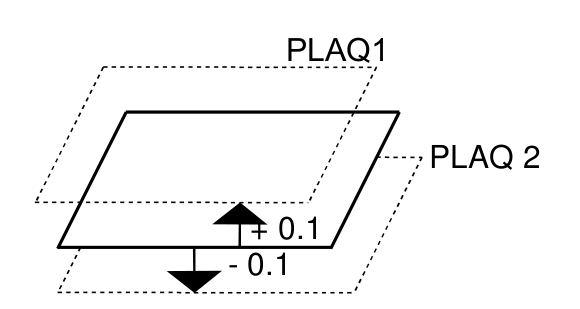3. Modeling A#
3.1. Characteristics of modeling#
The model consists of 2 bi-layer plates corresponding to the mean plane of the quad-layer of the reference model.
To represent these 2 plates, we start from the mesh of the mean plane of the quadrilayer that is offset from the distances \(\mathrm{-}0.1\) and \(0.1\).
The elements used are plate DKT elements.

3.2. Characteristics of the mesh#

The mesh is regular.
We have 10 subdivisions according to \(x\) and 5 subdivisions according to \(y\); a total of 50 DKQ (quad4) meshes and 66 knots.
3.3. Tested values#
Identification |
Reference \((\times {10}^{-6}m)\) |
\(\mathrm{DX}(\mathrm{N1})\) |
—3.680419 |
\(\mathrm{DY}(\mathrm{N1})\) |
—0.493941 |
\(\mathrm{DZ}(\mathrm{N1})\) |
—5697.7635 |
\(\mathrm{DRX}(\mathrm{N1})\) |
—436.1676 |
\(\mathrm{DRY}(\mathrm{N1})\) |
508.6670 |
\(\mathrm{DX}(\mathrm{N10})\) |
—2.172360 |
\(\mathrm{DY}(\mathrm{N10})\) |
—0.783905 |
\(\mathrm{DZ}(\mathrm{N10})\) |
—3946.2632 |
\(\mathrm{DRX}(\mathrm{N10})\) |
—412.1209 |
\(\mathrm{DRY}(\mathrm{N10})\) |
455.0638 |